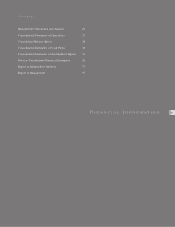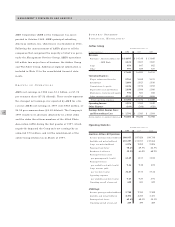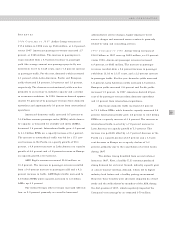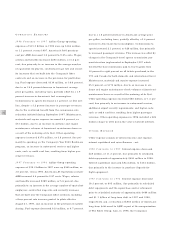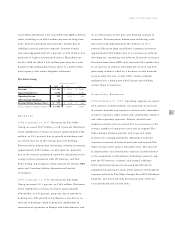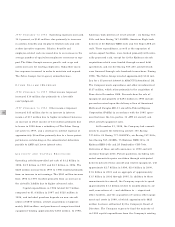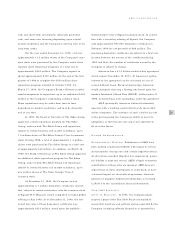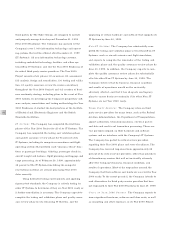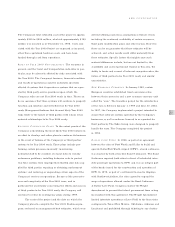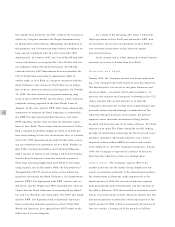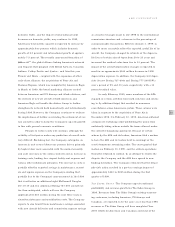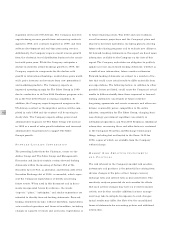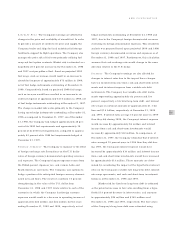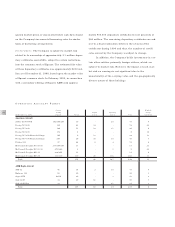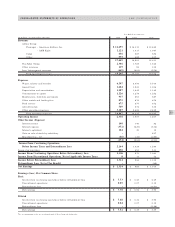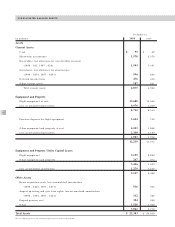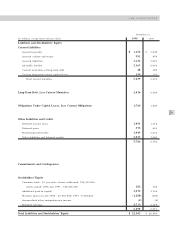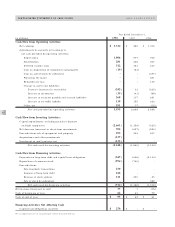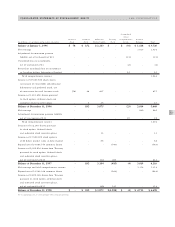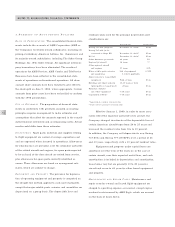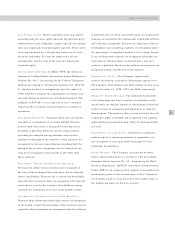American Airlines 1998 Annual Report Download - page 35
Download and view the complete annual report
Please find page 35 of the 1998 American Airlines annual report below. You can navigate through the pages in the report by either clicking on the pages listed below, or by using the keyword search tool below to find specific information within the annual report.
33
domestic traffic, and the impact of international yield
decreases on domestic yields, may continue. In 1999,
American’s total system capacity is expected to increase by
approximately four percent, which includes domestic
growth of 2.5 percent and international growth of approxi-
mately 7.5 percent. The recently announced formation of
oneworldTM, the global alliance linking American’s network
and frequent flyer program with British Airways, Canadian
Airlines, Cathay Pacific and Qantas - and later this year
Finnair and Iberia - coupled with the expansion of other
code-share alliances, the acquisitions of Reno Air and
Business Express, which was completed by American Eagle
in March of 1999, the broad marketing alliances created
between American and US Airways and Alaska Airlines, and
the delivery of new jet aircraft at both American and
American Eagle will enable the Airline Group to further
strengthen its network both domestically and internationally
during 1999. However, the Company continues to evaluate
the implications of further accelerating the retirement of cer-
tain aircraft in order to keep the Company’s capacity growth
in line with general economic conditions.
Pressure to reduce costs will continue, although the
volatility of fuel prices makes any prediction of overall costs
very difficult. Excluding fuel, the Company anticipates an
increase in unit costs of about one percent, driven primarily
by higher labor costs associated with the normal seniority
and scale increases in the union contracts and an increase in
training costs, landing fees, airport facility rent expense and
various other inflationary pressures. The increase in costs is
partially offset by expected savings in maintenance, materi-
als and repairs expense on the Company’s existing fleet,
partially due to the Company’s announcement in late 1998
that it will retire an additional eight McDonnell Douglas
DC-10-10 and two additional Boeing 727-200 aircraft ear-
lier than anticipated, which will save the Company
approximately $40 million during the next three years in
aircraft maintenance and modification costs. The Company
expects to also benefit from maintenance savings associated
with new aircraft deliveries and commission expense savings
as a result of changes made in late 1998 to the international
commission structure and a decrease in the percentage of
commissionable transactions. Effective January 1, 1999, in
order to more accurately reflect the expected useful life of its
aircraft, the Company changed its estimate of the deprecia-
ble lives of certain aircraft types from 20 to 25 years and
increased the residual value from five to 10 percent. The
impact of the aircraft depreciation changes is expected to
result in an approximate $165 million decrease in 1999
depreciation expense. In addition, the Company will depre-
ciate its new Boeing 737-800s and Boeing 777-200IGWs
over a period of 25 and 30 years, respectively, with a 10
percent residual value.
In early February 1999, some members of the APA
engaged in certain activities (increased sick time and declin-
ing to fly additional trips) that resulted in numerous
cancellations across American’s system. These actions were
taken in response to the acquisition of Reno Air in
December 1998. On February 10, 1999, American obtained
a temporary restraining order prohibiting the union from
unilaterally taking actions outside the terms allowed under
the collective bargaining agreement. Because of certain
actions by the APA and its leaders, American filed a motion
to have the APA and its leaders held in contempt of the
court’s temporary restraining order. The court granted that
motion on February 13, 1999, and the airline’s operations
thereafter returned to normal. In an attempt to resolve the
dispute, the Company and the APA have agreed to non-
binding mediation. The Company estimates that the illegal
pilot job action resulted in a pre-tax earnings impact of
approximately $200 to $225 million during the first
quarter of 1999.
THE SABRE GROUP The Company expects continued
profitability and revenue growth for The Sabre Group in
1999. Revenues from The Sabre Group’s existing outsourc-
ing customers, including American, US Airways and
Canadian, are expected to be the same as or less than 1998
revenues as The Sabre Group will have completed Year
2000 efforts for American and Canadian and most of the
AMR CORPORATION


